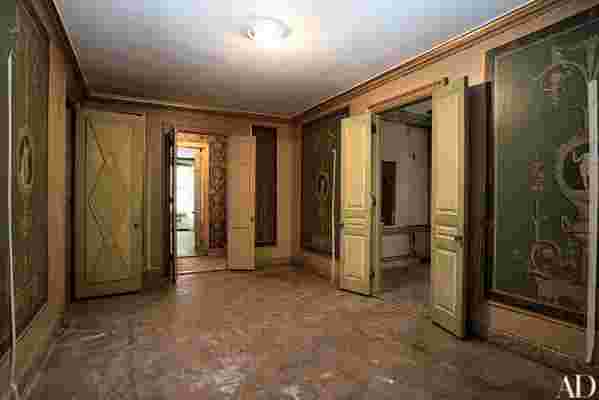This article originally appeared in the November 2013 issue of Architectural Digest.
Collectors of Louis XIV and XV furniture, Candice and Steven Stark have a reverence for history. It’s part of what attracted them to the Manhattan pied-à-terre they bought several years ago in a landmark 1920s building on Park Avenue. But despite its refined bones, the 3,500-square-foot apartment was so tattered and out-of-date that the couple had little choice but to gut it completely. Dusky murals darkened the entrance gallery, peeling paint littered the dressing room, a curvaceous pink bed platform in the master bedroom seemed irredeemably stuck in the Dynasty era, and in the kitchen, cardboard affixed with duct tape blocked an air-conditioner slot. “The place was falling apart,” Candice recalls. “Right away I said, ‘Rip down this wall and that wall! Punch up the ceilings!’”
In truth the Starks had been looking for a wreck, a place they could renovate and make their own since their three children were grown. Candice coveted a downtown loft. Steven preferred to be on the Upper East Side, within walking distance of the offices of Stark, the carpet, fabric, furniture, and wall-covering company where he is president and which his father launched in 1938. The pair found their compromise in the Park Avenue apartment: It was uptown, but its capacious, woebegone rooms made the space ripe for a youthful, airy makeover.
With that program in mind, the Starks turned to Manhattan designer Trisha Reger , who has collaborated with them on a number of projects over the past 25 years, including their primary residence, a 20,000-square-foot French-style house in New Jersey.
The apartment’s alterations were extensive, but care was taken to largely preserve the floor plan, which consists of public and private zones separated by the entrance gallery. “Every decision was made to amplify the sense of space,” the designer says. Ceilings were raised to ten and a half feet, as Candice requested, revealing awkwardly placed structural beams that Reger cleverly blended into handsomely configured coffers. Doors were heightened and aligned with windows, so natural light could flow deep into the rooms. Reger also installed triple-glazed windows, which Steven calls the renovation’s smartest improvement. “We’re on the second floor,” he explains, “but we don’t hear any noise from the street, even in our bedroom.”



Reger’s most radical move was to combine the formal living and dining rooms—which previously had separate double-door entrances off the gallery—into one sweeping expanse. She jettisoned the living room’s 18th-century-style marble mantel in favor of a custom-made limestone replacement with an Art Moderne profile. Accented by a piercingly blue canvas by abstract painter George Chaplin, a propeller-like David Weeks Studio ceiling fixture, and antique and modern furniture, the space has the “hip feel of a cocktail lounge,” says Reger. “The Starks can have a dinner for 16 or a party for 100 here.”
